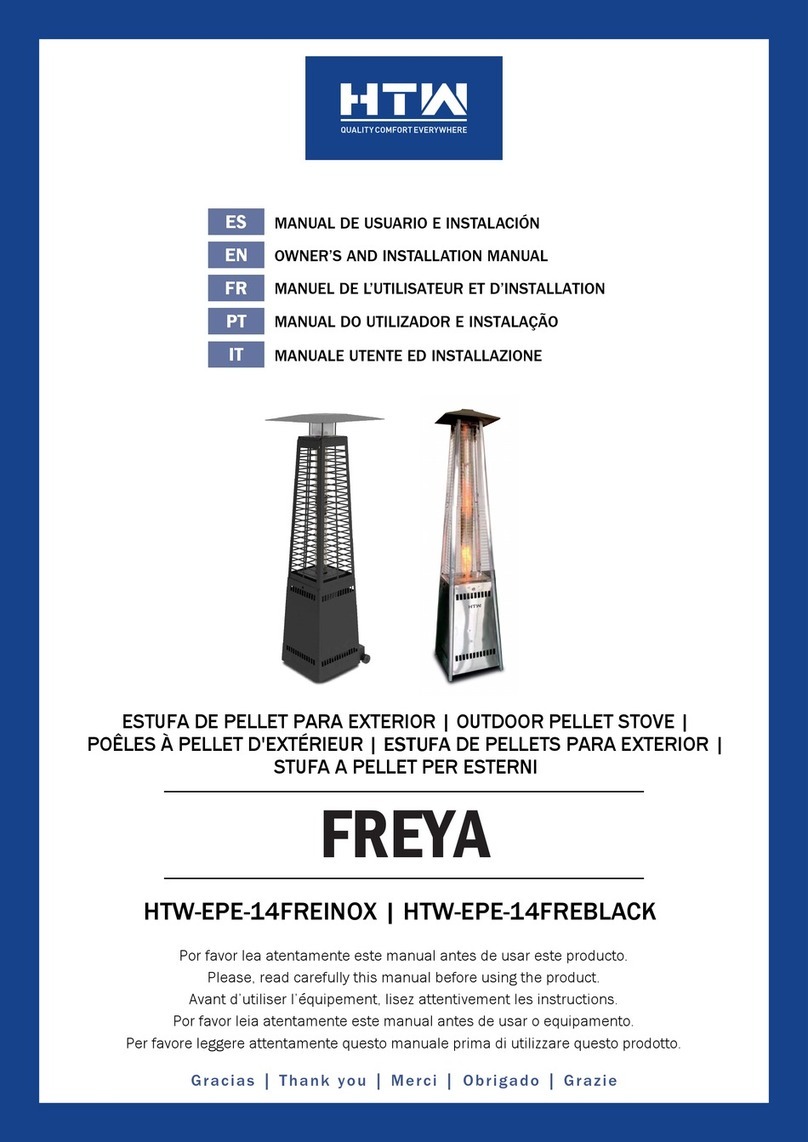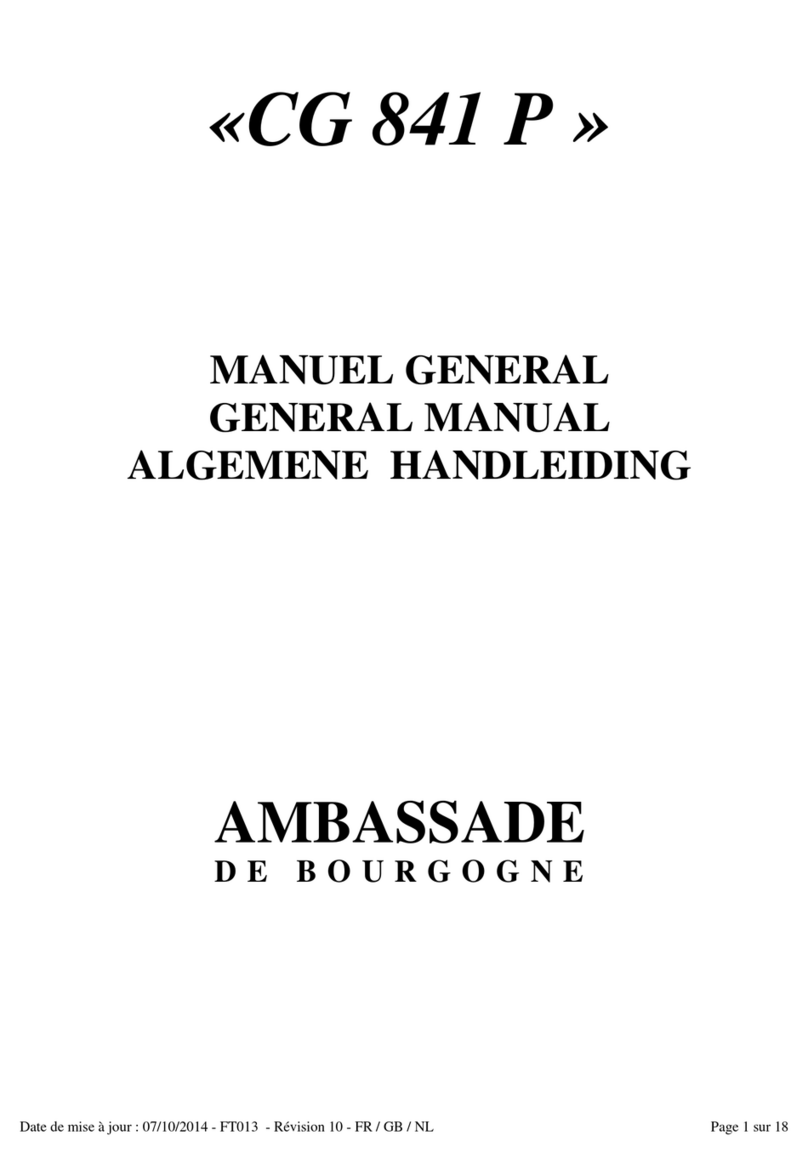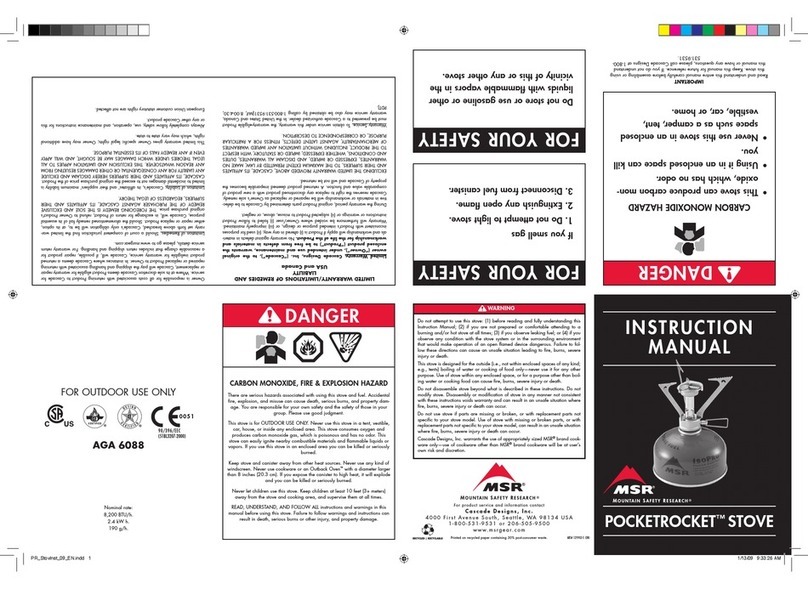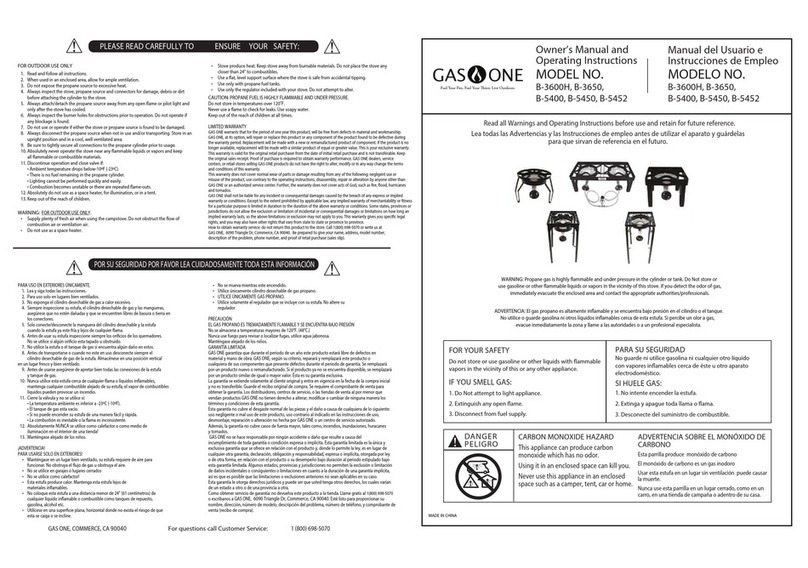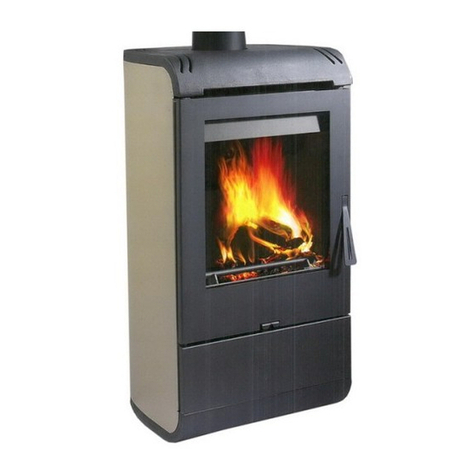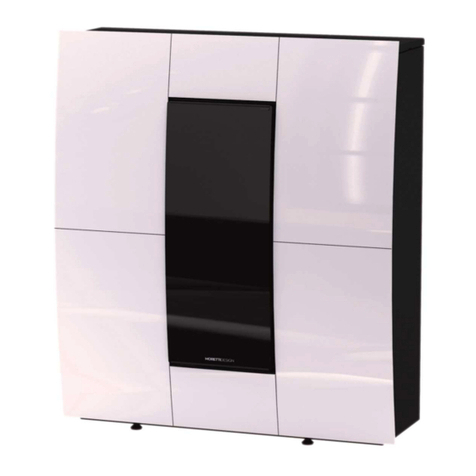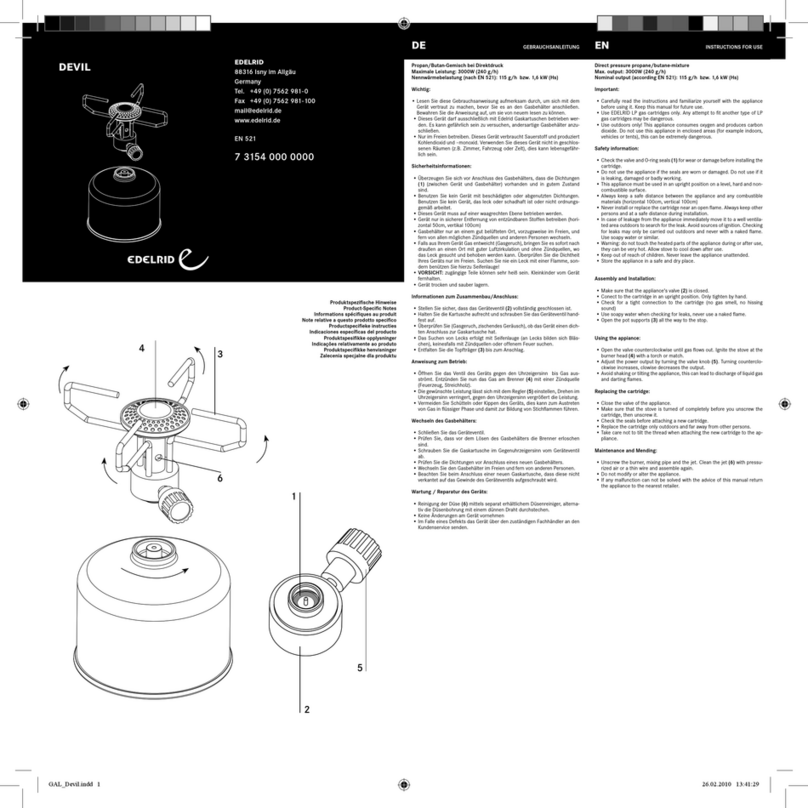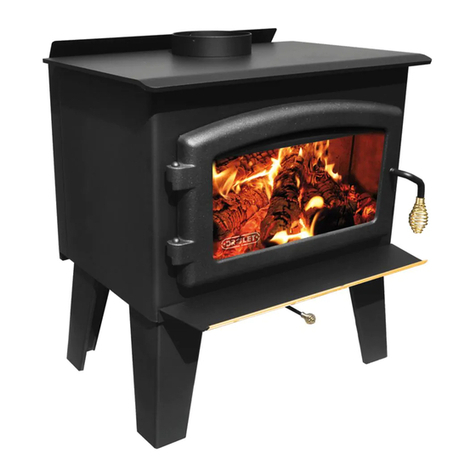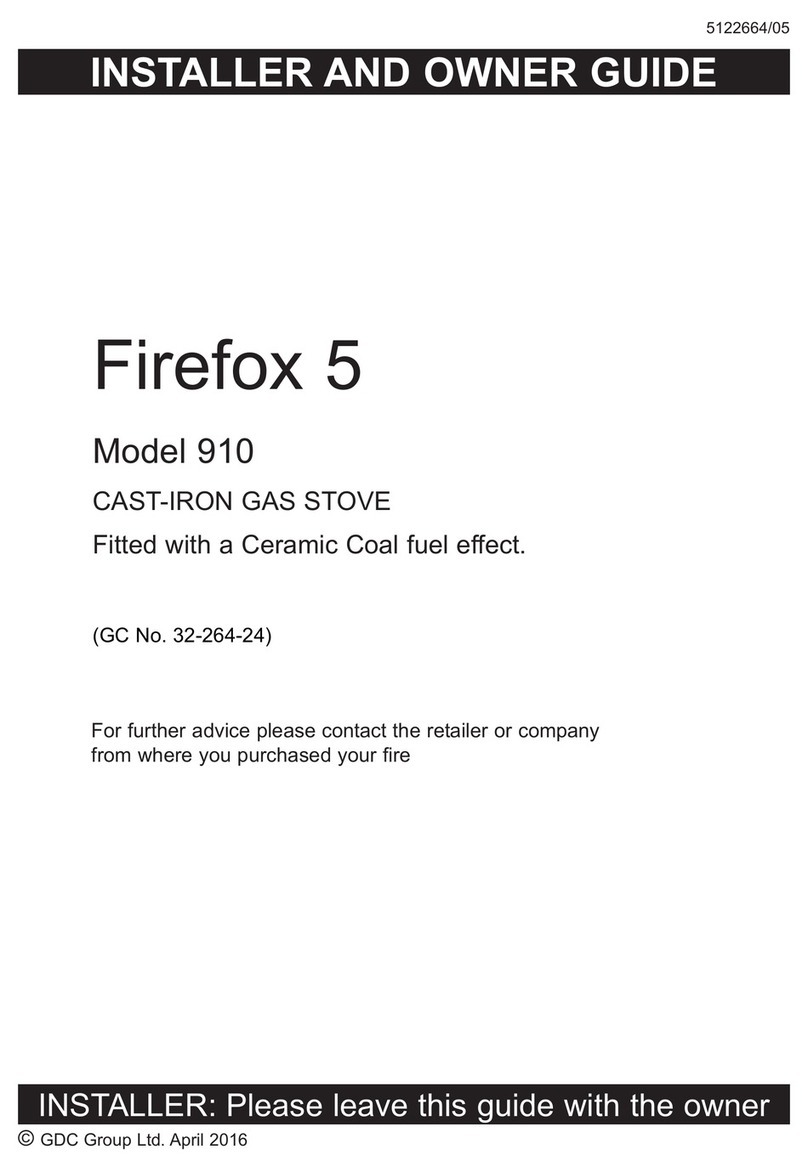1. SAFETY
This product uses fuel effect pieces containing Refractory Ceramic Fibres
(RCF), which are man-made vitreous silicate fibres. Excessive exposure to
these materials may cause irritation to eyes, skin and respiratory tract.
Consequently, it is important to take care when handling these articles to
ensure that the release of dust is kept to a minimum. To ensure that the release
of fibres from these RCF articles is kept to a minimum, during installation and
servicing we recommend that you use a HEPA filtered vacuum to remove any
dust and soot accumulated in and around the stove before and after working on
the stove. When replacing these articles we recommend that the replaced items
are not broken up, but are sealed within a heavy duty polythene bag, clearly
labelled as RCF waste. RCF waste is classed as a stable, non-reactive
hazardous waste and may be disposed at a landfill licensed to accept such
waste. Protective clothing is not required when handling these articles, but we
recommend you follow the normal hygiene rules of not smoking, eating or
drinking in the work area and always wash your hands before eating or
drinking. This appliance does not contain any component manufactured from
asbestos or asbestos related products.
Installer
Firefox stoves are efficient appliances giving off convected, conducted and radiated
heat. All the surfaces of the stove, except the controls, are working surfaces and
become hot in use. They must not be touched or have any combustible objects or
materials placed on or near them. A fire guard complying with BS 8423 should be
fitted for the protection of young children, the elderly, the infirm or pet animals.
The appliance is fitted with a flue safety device. f the appliance closes down after a
period of operation for no apparent reason, the consumer should be informed to stop
using the appliance until the installation and appliance have been thoroughly
checked. Under no circumstances should the flue safety device be altered or
bypassed in any way. Only a genuine manufacturers replacement part should be
fitted.
Before continuing any further with the installation of this appliance please read the
following guide to manual handling:
-The approximate lifting weight of this appliance is 70 kg. We therefore recommend
that two people should be sufficient to lift the stove. f fitting or moving the stove alone
we recommend the use of suitable lifting apparatus.
-When lifting always keep your back straight. Bend your legs and not your back.
-Avoid twisting at the waist. t is better to reposition your feet.
-Avoid upper body/top heavy bending. Do not lean forward or sideways whilst
Page 6
© GDC Group Ltd. 2015
NSTALLER GU DE





















